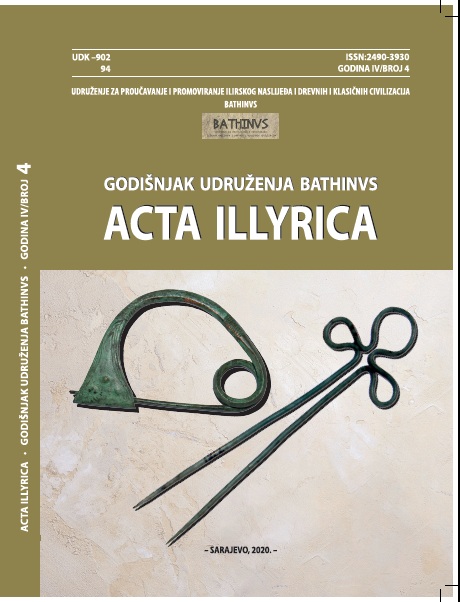Novi pristup istraživanju rimske putne komunikacije Salona - Servitium
A new approach to the research of the Roman road Salona - Servitium
Author(s): Goran PopovićSubject(s): Archaeology, Local History / Microhistory, Ancient World
Published by: Udruženje za proučavanje i promoviranje ilirskog naslijeđa i drevnih i klasičnih civilizacija “BATHINVS”
Keywords: Roman roads;travelogue;Salona;Servitium;province of Dalmatia;
Summary/Abstract: During the previous research of the Roman road communication Salona – Servitium, the works of foreign travel writers who traveled through Bosnia and Herzegovina during the Ottoman rule were not used. These travelogues are very significant, as we can see on the example of the report of an anonymous French officer from 1810, travelogues of the Prussian consul Otto Blau, and Russian consul Alexander Hilferding. Exploring potential routes for the passage of the French army, the unknown officer traveled through parts of western and central Bosnia. On that occasion, he paid special attention to the roads and their quality. In the area between the village of Sitnice and Podraško polje, the French officer notes the existence of a stone-paved road that stretches for half an hour.Otto Blau, the Prussian consul in Sarajevo, traveled the same route in 1867 as a French officer 57 years earlier. Blau states that between Sitnica and Podražnica, near the village of Čađavica, there are remains of the Roman road communication Salona – Servitium. If we accept the data noted by an anonymous French officer and Otto Blau as accurate,it means that the ancient road communication Salona – Servitium from Podraško polje continued north through Sitnica and Ratkovo to Banja Luka, as believed by Esad Pašalić, and not in the direction of Gustovara – Bočac – Vrbas, which was pointed out by Ivo Bojanovski. Based on the travelogue of Alexander Hilferding, the Russian consul in Sarajevo in1857, it can be discovered that one part of the Roman road Salona – Servitium was used during the mid-19th century. Hilferding complains about the poor condition of the old,stone-paved road where the horses could barely move. A comparison of information from the travelogue of the Russian consul and the reconnaissance of the terrain made by Pašalić in the mid-20th century leads to the conclusion that the remains of the Roman road mentioned by Hilferding are cut along the slopes of Mount Lipovac, between villages Pecka and Mlinište.
Journal: Godišnjak Udruženja BATHINVS “Acta Illyrica”
- Issue Year: 4/2020
- Issue No: 4
- Page Range: 163-173
- Page Count: 11
- Language: Serbian

